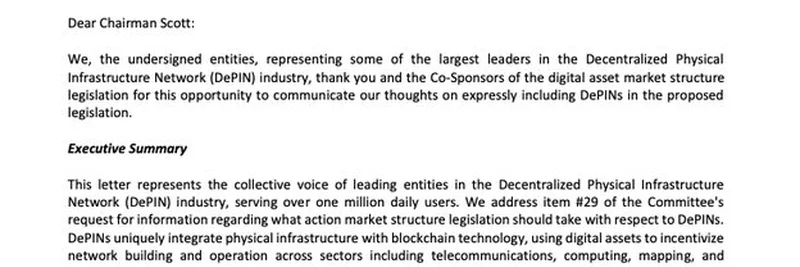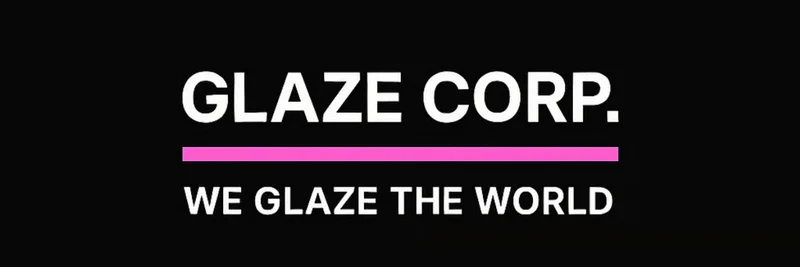Hey there, crypto enthusiasts! If you’ve been keeping an eye on the decentralized physical infrastructure network (DePIN) space, you’re in for a treat. A powerhouse coalition of DePIN projects—including Helium, Hivemapper, OTOY, Akash Network, Glow, Andrena, and Dawn—has just submitted some game-changing amendments to the U.S. Senate Banking Committee. This move is all about securing regulatory clarity for the booming DePIN sector, and it’s got everyone talking!
What’s DePIN All About?
Before we dive into the details, let’s break it down. DePIN, or Decentralized Physical Infrastructure Networks, uses blockchain technology to manage real-world infrastructure like wireless networks, energy grids, and even mapping systems. Think of it as a way for everyday people to contribute resources—say, internet bandwidth or sensor data—and earn tokens in return. It’s a $50 billion market as of 2024, with projections soaring to a mind-blowing $3.5 trillion by 2028. That’s a 70x growth potential, but there’s a catch: regulatory uncertainty could slam the brakes on this innovation.
The Big Amendments
So, what’s in these amendments? The coalition, led by a letter dated August 4, 2025, addressed to Chairman Tim Scott, is pushing for three key changes:
- Defining DePINs Separately: They want DePINs to be recognized as distinct from traditional securities. This is huge because it could prevent these projects from being tangled in complex securities laws.
- Tokens Aren’t Investment Contracts: The group argues that tokens earned for building physical infrastructure shouldn’t be treated as investment contracts under the Howey Test (a legal standard for determining if something is a security). This would free up token distribution without the heavy regulatory burden.
- Capping Insider Holdings: They propose limiting insider token ownership to 20%, ensuring a fairer distribution and reducing the risk of market manipulation.
These proposals are laid out in a detailed letter (check out the image above for a sneak peek!), which represents the collective voice of an industry serving over one million daily users. The coalition’s goal? To protect the $3.5 trillion opportunity projected by 2028 and avoid a scenario where regulatory confusion stifles growth.
Why This Matters
Right now, the lack of clear rules is a major hurdle. Without proper guidelines, DePIN projects risk lawsuits or stalled investments, as noted in recent discussions on Cointelegraph. The coalition’s amendments aim to create a clear path through the Securities and Exchange Commission (SEC) guidance and existing legislation like the CLARITY Act. By doing so, they hope to demonstrate that token distributions for infrastructure work aren’t investment contracts—potentially reshaping how regulators view crypto.
The stakes are high. With over $50 billion already invested and 2024-2028 projections hinting at a $3.5 trillion market, unclear regulations could hinder innovation and adoption. The letter even suggests that without these changes, participants might face ongoing uncertainty, hampering American innovation.
The Buzz on X
The X thread sparked by Nick Carp has ignited excitement. Replies from the community—like Dabba Network urging “Faster!” and Harry Dewhirst predicting institutional attention—show the hype. Others, like Neo Siddhartha, are rallying to “Protect #DePIN,” signaling strong community support.
What’s Next?
The Senate Banking Committee is set to finalize digital asset market structure legislation by September 30, 2025, aligning with broader efforts to make the U.S. a crypto hub under President Trump’s vision. If these amendments pass, it could unlock massive growth for DePIN projects and set a precedent for crypto regulation globally.
For now, keep an eye on this space! The DePIN coalition’s push could be a turning point for decentralized infrastructure. Got thoughts? Drop them in the comments, and let’s chat about how this might shape the future of blockchain. And if you’re into meme tokens or other crypto trends, check out more insights on Meme Insider!




